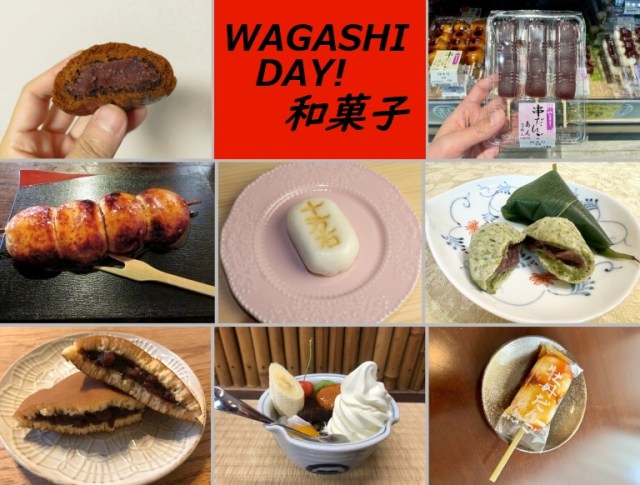
Here are our picks as we happily take Japan’s historical/cultural excuse to eat desserts.
Japan has a lot of quasi-holidays, and one of the sweetest is on June 16, Wagashi Day, a day to celebrate (and eat) wagashi, or traditional Japanese sweets.
The date was chosen by the Japan Wagashi Association, which marked the first Wagashi Day in 1979. According to historical records, June 16 was the date on which Emperor Ninmyo, in the year 848, made a shrine offering that included wagashi while praying for good health. In later centuries, during the Muromachi period, it became poplar among samurai and the nobility to eat wagashi in a ceremony called kajo, also held on June 16, which was said to grant good fortune and health.
Of course, modern nutritional science has taught us that desserts aren’t really the key to unlocking optimum health. There’s nothing wrong with the occasional indulgence, though, so we were more than happy to take June 16 as an excuse to treat ourselves to some wagashi, and today we’re presenting 8 of our absolute favorite types of Japanese sweets, including which maker, as picked by a panel of SoraNews24’s reporters.
1. Dorayaki made by Usagiya (P.K. Sanjun’s pick)
Dorayaki is a pair of palm-sized pancake-like cakes with a filling of sweet red bean paste.
I like all kinds of wagashi, but none of them can surpass the dorayaki made by Usagiya. They sell them at the Usagiya shop in Tokyo’s Ueno neighborhood, and right in the same building, in the basement, is the kitchen where they make the dorayaki, so the ones you get there are super fresh. People even joke that there’s a team of rabbits (usagi in Japanese) working down there. The dorayaki cost 240 yen (US$1.55), and there’s no other wagashi that can make me this happy for this price.
2. Kokuto manju from a convenience store (Seiji Nakazawa’s pick)
Kokuto manju is a manju (sweet dumpling) made with kokuto (brown sugar) and a filling of sweet red bean paste.
I love koshi-an (smooth sweet bean paste). I’ve loved it ever since I was a little kid, and I especially love it when it’s inside kokuto manju, and even more than a freshy cooked kokuto manju from a specialty shop, where the dough might have a little bit of crispness, I like the ones you can pick up at any convenience store. The dough is fluffy but doesn’t get in the way of the flavor of the koshi-an, and you can really taste the koshi-an flavor after it’s cooled down. That quality is really convenient across convenience store chains too, and I love that it’s something you can always treat yourself to. If you haven’t tried them yet, give them a shot at your local convenience store – they only cost about 100 yen.
3. Botan Dango from Fukuya (Go Hatori’s pick)
Dango are round mochi dumplings, usually served on a wooden skewer.
Fukuya’s Botan Dango are dango with anko (sweet bean paste) inside, and the dango are covered with anko too. It’s such a decadent double serving that the first time I tried them I almost fainted from how good they tasted. Botan dango are so good that I think anyone will fall in love with them instantly, so they’re a great choice to give as a gift. Actually, I give them as a gift to myself sometimes too. When I’ve been working really hard, I’ll get myself a skewer, pour a cup of tea, and take a happy little moment for myself. Fukuya is originally from Saitama Prefecture, but they have one shop in Tokyo, in Ogikubo, and I think it’s worth making the trip there just to buy these.
4. Jumnagoku Manju from Jumangoku Fukusaya (Mr Sato’s pick)
When I hear the words “delicious wagashi,” the thing that instantly appears in my mind is this famous manju from the town of Gyoda in Saitama Prefecture. The dough isn’t that thick, so there’s plenty of room inside for anko, enough so that the second you bite into it, your taste buds get wrapped in that captivating sweet sensation and your heart feels full of satisfaction.
5. Kushi Dango from Yamazaki Bread (Takamichi Furusawa’s pick)
In terms of cost performance, I think this is the best wagashi there is, and they’re my go-to sweet snack. You get three skewers for only about 100 yen, and you can find it really easily in convenience stores, so it’s super convenient too. The anko has a gentle sweetness to it, and the dumplings are smooth with just the right amount of chewiness. Pop the skewers in the microwave for 30 seconds and they get warm, melty, and even better.
6. Yakimanju from Chuji Chaya (Ahiruneko’s pick)
Gunma Prefecture is famous for yakimanju, which are dumplings that are grilled after being steamed, and slathered with a flavorful miso-based sauce. The sauce is very sweet, but if you get dumplings without any sweet bean filling inside, then the balance between the sweet sauce and doughy manju is actually really good. My grandparents, who live in Gunma, have been sending me these in the mail since I was a little kid, and it’s a flavor I’ve loved for as long as I can remember.
7. Fusuma manju from Awaya Sobeiya (Yoshio’s pick)
I’ve loved these ever since I was in elementary school, and I’ve been eating them ever since. So have my mom and my two older sisters. They’re nice and chewy, and the bean paste inside isn’t too sweet. The dough is made with kawanori, an edible mountain stream algae that can be prepared like dried seaweed, which gives it a special rustic feel.
8. Handmade Monaka from Fukusaya (Mariko Ohanabatake’s pick)
Monaka are mochi wafers with a sweet filling.
Nagasaki’s Fukusaya is most famous for its castella cakes, but among us locals, their Handmade Monaka are a big hit too! The wafers are fragrant and crisp, and the set comes with sweet bean paste for you to spoon in between them. It’s such a blissful combination that after trying it, you might not be able to go back to other monaka.
And remember, even though Wagashi Day 2024 is already over, the best day to eat wagashi is always whatever day you feel like it.
Related: Usagiya, Fukuya, Jumangoku Fukusaya, Chuji Chaya, Awaya Sobeiya, Fukusaya
Photos © SoraNews24
● Want to hear about SoraNews24’s latest articles as soon as they’re published? Follow us on Facebook and Twitter!
[ Read in Japanese ]

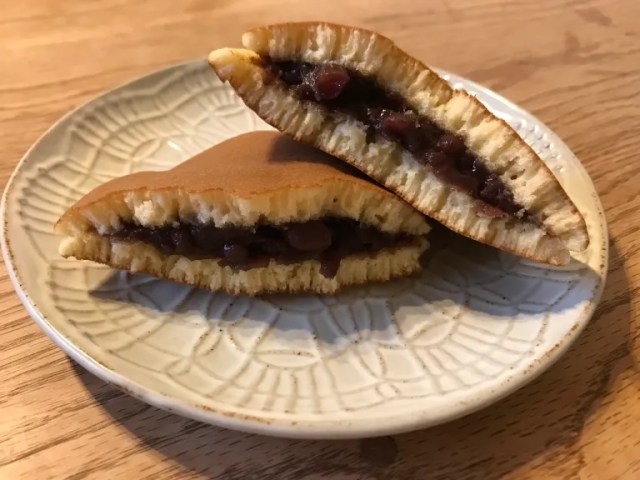
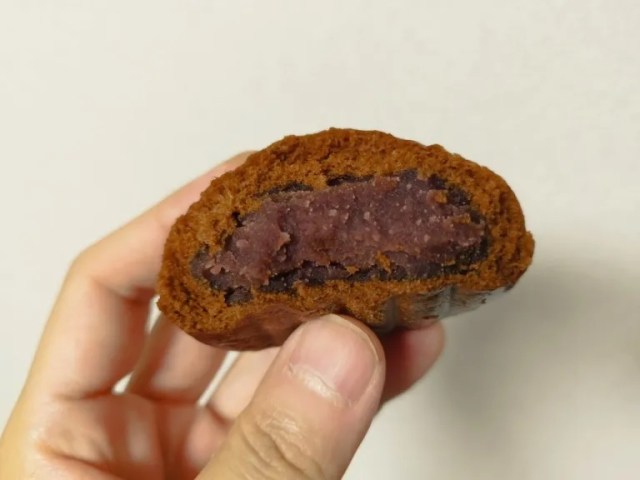
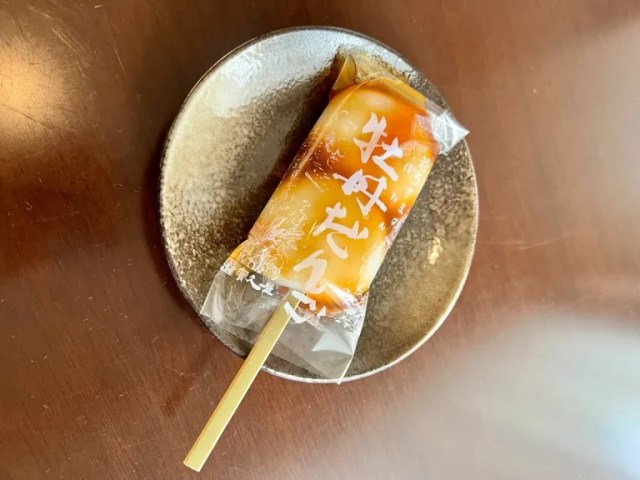
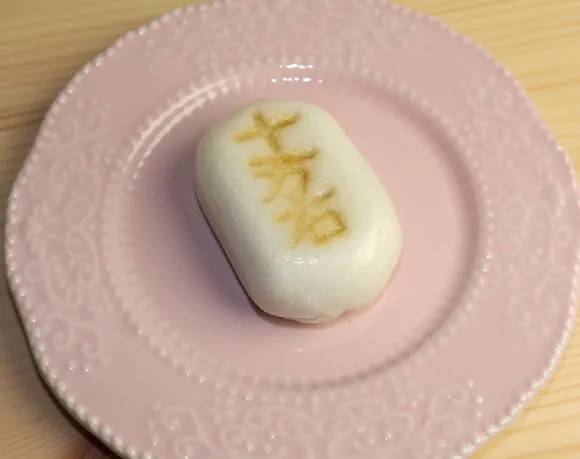
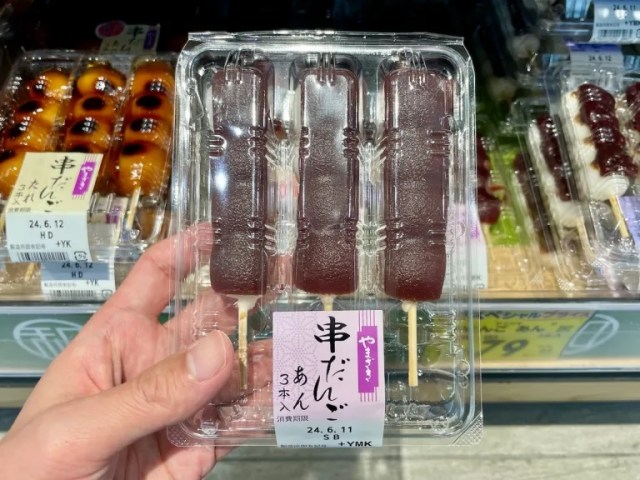
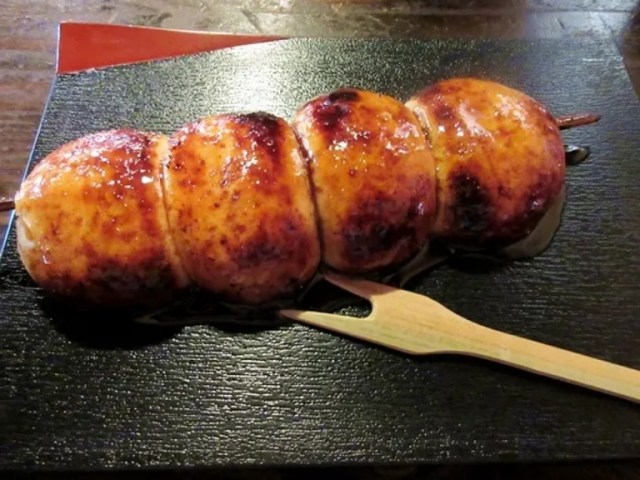
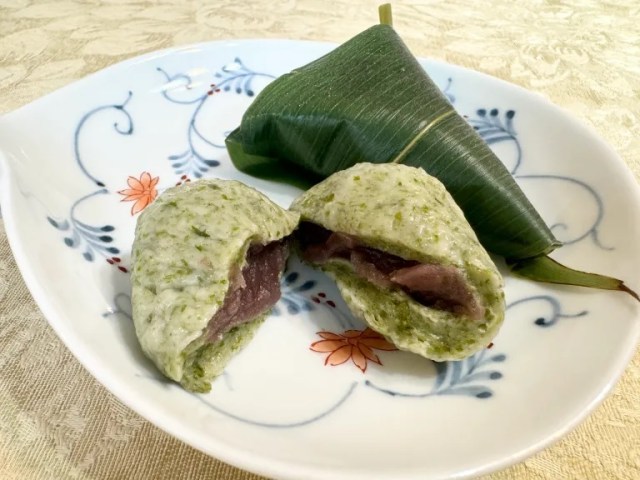
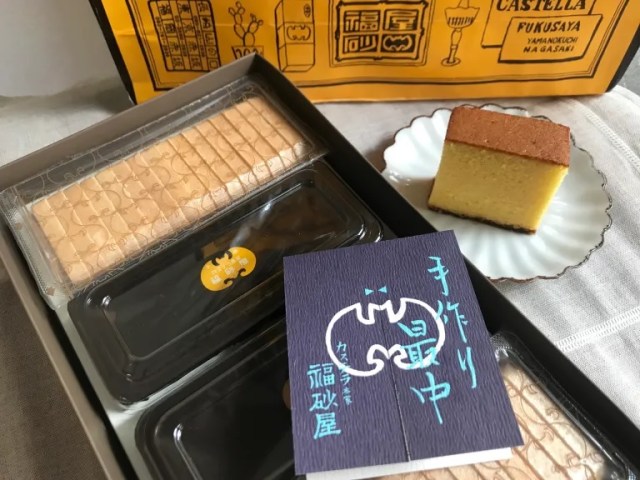
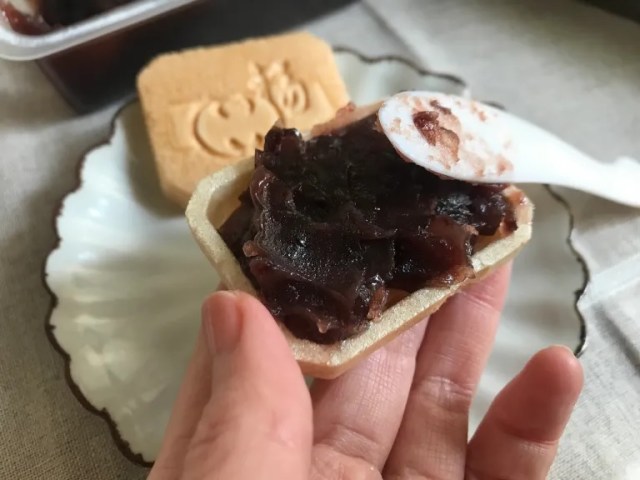
 Japanese convenience store chain adds Neo Wagashi sweets to its lineup
Japanese convenience store chain adds Neo Wagashi sweets to its lineup We became Japanese sweet chefs for a day with Popin Cooking’s DIY wagashi set
We became Japanese sweet chefs for a day with Popin Cooking’s DIY wagashi set Kyoto store makes embroidered badges, tests our knowledge of traditional Japanese sweets
Kyoto store makes embroidered badges, tests our knowledge of traditional Japanese sweets Make your own “wagashi” Japanese sweets at home with these creation kits
Make your own “wagashi” Japanese sweets at home with these creation kits Studio Ghibli serves up My Neighbour Totoro with a side of traditional Japanese wagashi sweets
Studio Ghibli serves up My Neighbour Totoro with a side of traditional Japanese wagashi sweets Starbucks Japan releases new drinkware and goods for Valentine’s Day
Starbucks Japan releases new drinkware and goods for Valentine’s Day Massive manga collaboration bringing 100 years of Shueisha manga to Uniqlo T-shirts【Photos】
Massive manga collaboration bringing 100 years of Shueisha manga to Uniqlo T-shirts【Photos】 Which Japanese beef bowl chain’s near-identical demon grater onioroshi ponzu gyudon is the best?
Which Japanese beef bowl chain’s near-identical demon grater onioroshi ponzu gyudon is the best? Majority of Japanese women in survey regret marrying their husband, but that’s only half the story
Majority of Japanese women in survey regret marrying their husband, but that’s only half the story The secret of Starbucks Japan’s Chocolate Chunk Cookie: It’s not made by Starbucks!
The secret of Starbucks Japan’s Chocolate Chunk Cookie: It’s not made by Starbucks! Mister Donut and Godiva continue their sweet sweets relationship with new treats on sale now in Japan
Mister Donut and Godiva continue their sweet sweets relationship with new treats on sale now in Japan Japanese thug wear from Birth Japan perfect for those breaking bad next year
Japanese thug wear from Birth Japan perfect for those breaking bad next year Japan’s Self-Defense Forces take “radio calisthenics” to an interesting new level
Japan’s Self-Defense Forces take “radio calisthenics” to an interesting new level Japan’s biggest manga magazine is raising its minimum payment rate for creators
Japan’s biggest manga magazine is raising its minimum payment rate for creators Randy’s Donuts opens first-ever branch in Japan, brings L.A.’s donuts to Tokyo【Photos】
Randy’s Donuts opens first-ever branch in Japan, brings L.A.’s donuts to Tokyo【Photos】 Starbucks Japan releases new Frappuccino and latte for Valentine’s Day
Starbucks Japan releases new Frappuccino and latte for Valentine’s Day Our 52-year-old pole dancing reporter shares his tips for achieving your New Year’s exercise goal
Our 52-year-old pole dancing reporter shares his tips for achieving your New Year’s exercise goal Ramen restaurant’s English menu prices are nearly double its Japanese ones, denies discriminating
Ramen restaurant’s English menu prices are nearly double its Japanese ones, denies discriminating Giant hotel rooms in Osaka reflect the new non-niche face of travel in Japan.
Giant hotel rooms in Osaka reflect the new non-niche face of travel in Japan. Japanese women showing rebounding interest in giving Valentine’s Day chocolate【Survey】
Japanese women showing rebounding interest in giving Valentine’s Day chocolate【Survey】 Totoro cream puffs and Catbus cookies are finally available in downtown Tokyo
Totoro cream puffs and Catbus cookies are finally available in downtown Tokyo Princess Mononoke magnets return just in time to treat yourself to awesome anime decorations
Princess Mononoke magnets return just in time to treat yourself to awesome anime decorations 10 times to avoid traveling in Japan in 2026
10 times to avoid traveling in Japan in 2026 What’s inside Starbucks Japan’s fukubukuro lucky bag for 2026?
What’s inside Starbucks Japan’s fukubukuro lucky bag for 2026? Starbucks Japan ready to get Year of the Horse started with adorable drinkware and plushies【Pics】
Starbucks Japan ready to get Year of the Horse started with adorable drinkware and plushies【Pics】 7-Eleven Japan starts new temporary luggage storage service in over 300 branches
7-Eleven Japan starts new temporary luggage storage service in over 300 branches Disillusionment at Tsukiji’s tourist-target prices led us to a great ramen restaurant in Tokyo
Disillusionment at Tsukiji’s tourist-target prices led us to a great ramen restaurant in Tokyo Starbucks teams up with 166-year-old Kyoto doll maker for Year of the Horse decorations【Photos】
Starbucks teams up with 166-year-old Kyoto doll maker for Year of the Horse decorations【Photos】 Tokyo’s Tsukiji sushi neighborhood asks tour groups to stay away for the rest of the month
Tokyo’s Tsukiji sushi neighborhood asks tour groups to stay away for the rest of the month Survey asks foreign tourists what bothered them in Japan, more than half gave same answer
Survey asks foreign tourists what bothered them in Japan, more than half gave same answer Japan’s human washing machines will go on sale to general public, demos to be held in Tokyo
Japan’s human washing machines will go on sale to general public, demos to be held in Tokyo We deeply regret going into this tunnel on our walk in the mountains of Japan
We deeply regret going into this tunnel on our walk in the mountains of Japan Studio Ghibli releases Kodama forest spirits from Princess Mononoke to light up your home
Studio Ghibli releases Kodama forest spirits from Princess Mononoke to light up your home Major Japanese hotel chain says reservations via overseas booking sites may not be valid
Major Japanese hotel chain says reservations via overseas booking sites may not be valid Put sesame oil in your coffee? Japanese maker says it’s the best way to start your day【Taste test】
Put sesame oil in your coffee? Japanese maker says it’s the best way to start your day【Taste test】 No more using real katana for tourism activities, Japan’s National Police Agency says
No more using real katana for tourism activities, Japan’s National Police Agency says Starbucks Japan reveals new sakura drinkware collection, inspired by evening cherry blossoms
Starbucks Japan reveals new sakura drinkware collection, inspired by evening cherry blossoms Updated cherry blossom forecast shows extra-long sakura season for Japan this year
Updated cherry blossom forecast shows extra-long sakura season for Japan this year We spend a morning with an expert wagashi chef creating no-bake traditional Japanese sweets!
We spend a morning with an expert wagashi chef creating no-bake traditional Japanese sweets! 300 year old Japanese confectioner gets ’serious, for real’ with a vegan, gluten free dorayaki
300 year old Japanese confectioner gets ’serious, for real’ with a vegan, gluten free dorayaki This dorayaki spot is one of the best sweets shop in Tokyo that people don’t know about yet
This dorayaki spot is one of the best sweets shop in Tokyo that people don’t know about yet We steel our hearts and sample Namikoshiken’s too-cute-to-eat, aquarium-themed wagashi sweets
We steel our hearts and sample Namikoshiken’s too-cute-to-eat, aquarium-themed wagashi sweets Pokémon and 158-year-old Kyoto sweets shop team up for Pokémon wagashi confectionery line【Pics】
Pokémon and 158-year-old Kyoto sweets shop team up for Pokémon wagashi confectionery line【Pics】  Dangly Totoro Japanese sweets charms are every bit as sweet and charming as you’d imagine【Photos】
Dangly Totoro Japanese sweets charms are every bit as sweet and charming as you’d imagine【Photos】 Take bites of the Milky Way and summer with traditional, Tanabata-inspired Japanese sweets【Pics】
Take bites of the Milky Way and summer with traditional, Tanabata-inspired Japanese sweets【Pics】 Hidden in plain sight, low-key sweets shop surviving in Tokyo’s street market is a tasty treasure
Hidden in plain sight, low-key sweets shop surviving in Tokyo’s street market is a tasty treasure Sweets maker Funabashiya celebrates 220 years at popular Tokyo shrine’s Wisteria Festival
Sweets maker Funabashiya celebrates 220 years at popular Tokyo shrine’s Wisteria Festival Love Japanese yokai? You’ll love these Halloween-only yokai Japanese confectionaries
Love Japanese yokai? You’ll love these Halloween-only yokai Japanese confectionaries Perfect Japanese summer day: Chilled desserts served in a Kyoto manor house
Perfect Japanese summer day: Chilled desserts served in a Kyoto manor house Godiva releases first-ever yokan to celebrate 50th anniversary in Japan
Godiva releases first-ever yokan to celebrate 50th anniversary in Japan We eat Japan’s oldest sweet, available at only one store in all of Japan
We eat Japan’s oldest sweet, available at only one store in all of Japan New Japanese vending machines to love: The ones that sell Hiroshima’s best dessert!
New Japanese vending machines to love: The ones that sell Hiroshima’s best dessert! Edible fireworks? Japanese confectioner creates incredible sweets out of super-soft mochi【Photos】
Edible fireworks? Japanese confectioner creates incredible sweets out of super-soft mochi【Photos】
Leave a Reply